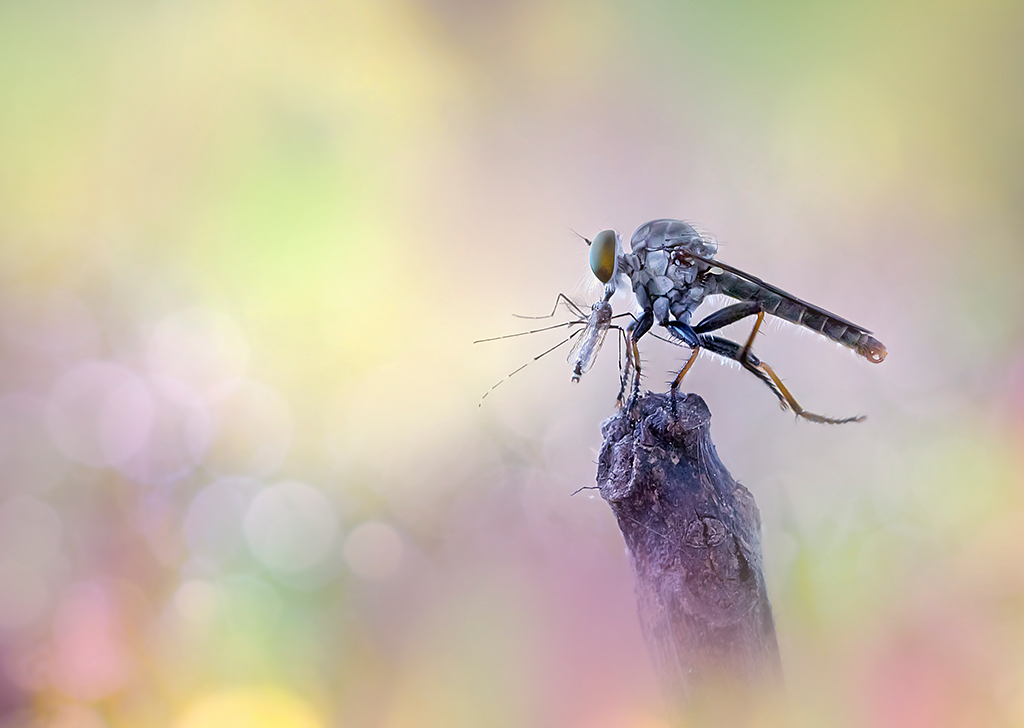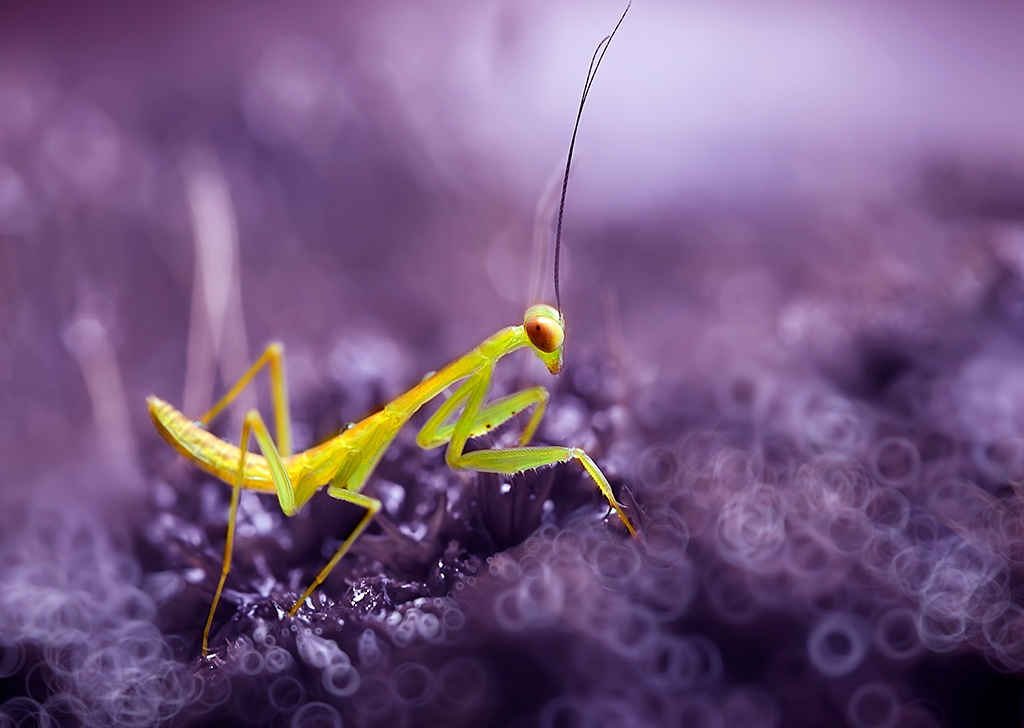
EOS 80D, EF100mm f/2.8L MACRO IS USM, f/9, ISO 400, 1/125s, 100mm
Photo by @fauzanmaududdin
Insects may be small, but if you zoom in on them in a photo, you’ll be amazed at the details of these critters. From the scales on a butterfly’s wing to the snapping jaws of a trap-jaw ant, a new world is waiting to be discovered by you if you’re adventurous enough to zoom in. Follow this simple guide to get started on your first insect photography shoot!

What’s Nearby?
You don’t have to venture far from home to shoot macro photos of insects. The nearby park (or even your backyard) contains a treasure trove of nature waiting to be discovered. For our readers who have plants outside their apartment, you can start by looking for possible occupants there too. As long as there is greenery, there’s a good chance that you’ll be able to spot some insects.
To get started, take it that you are visiting the park or your backyard for the first time. Be inquisitive and get close to the surfaces to try and spot the critters. Some may be camouflaged against their surroundings, so you’ll need a pair of keen eyes to find them.
Look out for non-harmful insects such as ladybugs, dragonflies and butterflies. These insects generally stay still unless you alarm them, so keep your actions small to avoid startling them.
Tip: When looking for insects, don’t just look at the surface. Look underneath leaves and rocks using your camera’s Vari-angle LCD screen to see if any critters are hiding underneath.

EOS 5D Mark II, EF100mm f/2.8L MACRO IS USM, f/9, ISO 400, 1/100s, 100mm
Photo by @fauzanmaududdin
Lens Choices
If you have a macro lens, great! These lenses offer high magnification, which will allow you to reproduce the exact size of the creature as seen through the lens. Some of our favourite macro lenses include the EF100mm f/2.8 Macro IS USM, RF85mm f/2 Macro IS STM and the new RF100mm f/2.8 Macro IS USM.
If you don't have a macro lens, don’t worry, there are some tips you can follow. To get started, frame the subject and try to get as close as you can until your lens cannot focus anymore. With any luck, you will be able to snap a cool shot of the bug.
If the insect still looks small in the picture, you can consider cropping the photo in post-processing to get a more detailed shot of it. The caveat in doing this is that you will lose resolution when you crop the photo.
An alternative to a macro lens would be an extension tube. This allows you to get closer to the subject and increase the magnification ratio of your lens. Now you can fill more of the frame with the subject, just as you might be able to do with a macro lens.

EOS 1300D, EF100mm f/2.8 MACRO USM, f/13, ISO 400, 1/100s, 100mm
Photo by @waphah
Camera and Autofocus Settings
On your camera, use shutter priority mode and select a fast shutter speed such as 1/125s and above. This will minimise blur caused by shaky hands, which can increase if you’re using a telephoto macro lens. Activate the Image Stabilizer on your camera and/or lens to further reduce image blur and better your chances of getting a sharp picture.
If you have access to a lens with Hybrid IS, you’re in luck. Developed for close-up photography, Hybrid IS compensates on the linear and rotational axes, giving you an additional shot at getting a tack sharp photo of the insect.
Depending on the lighting condition, you can set your ISO between ISO 200 to ISO 1,600. If you want more depth of field to capture more details on the insect, the f/stop should be around f/5.6 to f/8 and above.
If you’re trying to shoot a photo of a moving insect, such as a trail of crawling ants, activate Servo AF to keep the subject in focus for a sharp picture.
When using the EOS R5 or R6 to shoot with the viewfinder, the touch-and-drag AF will be a good option to deploy for swiftly changing your focus point should the insect start to move. If you are using the rear LCD to frame your shot, activate Touch AF and tap on the screen to focus on the insect and snap the shot.
For photographers using full-frame cameras, the crop mode on your camera behaves in the same manner by cropping away the sides to give you a lower resolution, hence creating the illusion that you have zoomed in on the insect. If the resolution of the image is a concern for you, consider upgrading to a higher megapixel count camera such as the EOS R5, which has a native resolution of 45 megapixels, and in 1.6x crop mode will deliver a 17-megapixel image. This is compared to the R6, which has a 20-megapixel sensor and churns out a 7.7-megapixel picture in crop mode.

EOS 5D Mark II, EF100mm f/2.8L MACRO USM, f/5, ISO 250, 1/80s, 100mm
Photo by @abdulgapurdayak
Keep Safe!
Having some basic knowledge of which insects may bite or sting will be useful. If you’re photographing such critters, approach them with caution. Some insects, such as bees, will not sting unless they are disturbed. If you’re photographing them, be mindful not to swat them away if they fly towards you.
So that’s it! A quick and simple guide to get you started on shooting macro photos of insects. For more tips on macro, check out this video!
For similar articles:

































